Uruguay has a lot to offer, from its stunning beaches and serene countryside to its rich culture and history.
In this guide, we'll share with you the most popular expat destinations in Uruguay as well as less-known locations in campo (countryside) worth exploring if you have a more adventurous streak.
So, let’s start. Here are our top best places to live in Uruguay for expats:
- Montevideo
- Punta del Este
- Maldonado
- Colonia del Sacramento
- La Paloma
- Punta del Diablo
- Atlantida
- Canelones
- Salto
- Durazno
Let's talk about why these locations are so attractive and their pros and cons.
Secure Peace of Mind with Best-Value International Health Coverage
International Citizens Insurance provide free, no-obligation quotes from the leading international health insurance providers with plans tailored to meet your needs. Trusted by thousands of expats worldwide.
Where expats live in Uruguay
Uruguay is a small country and has just one major city/metropolitan area with all the amenities and infrastructure. After that, you have small towns surrounded by fields, forests, and ranches.
Most expats in Uruguay flock to the southeast coast, mainly the capital city of Montevideo, the largest city in the country, and to coastal towns of the east coast up to Punta del Este. Or up the western coast to towns and villages of the Maldonado Departments.
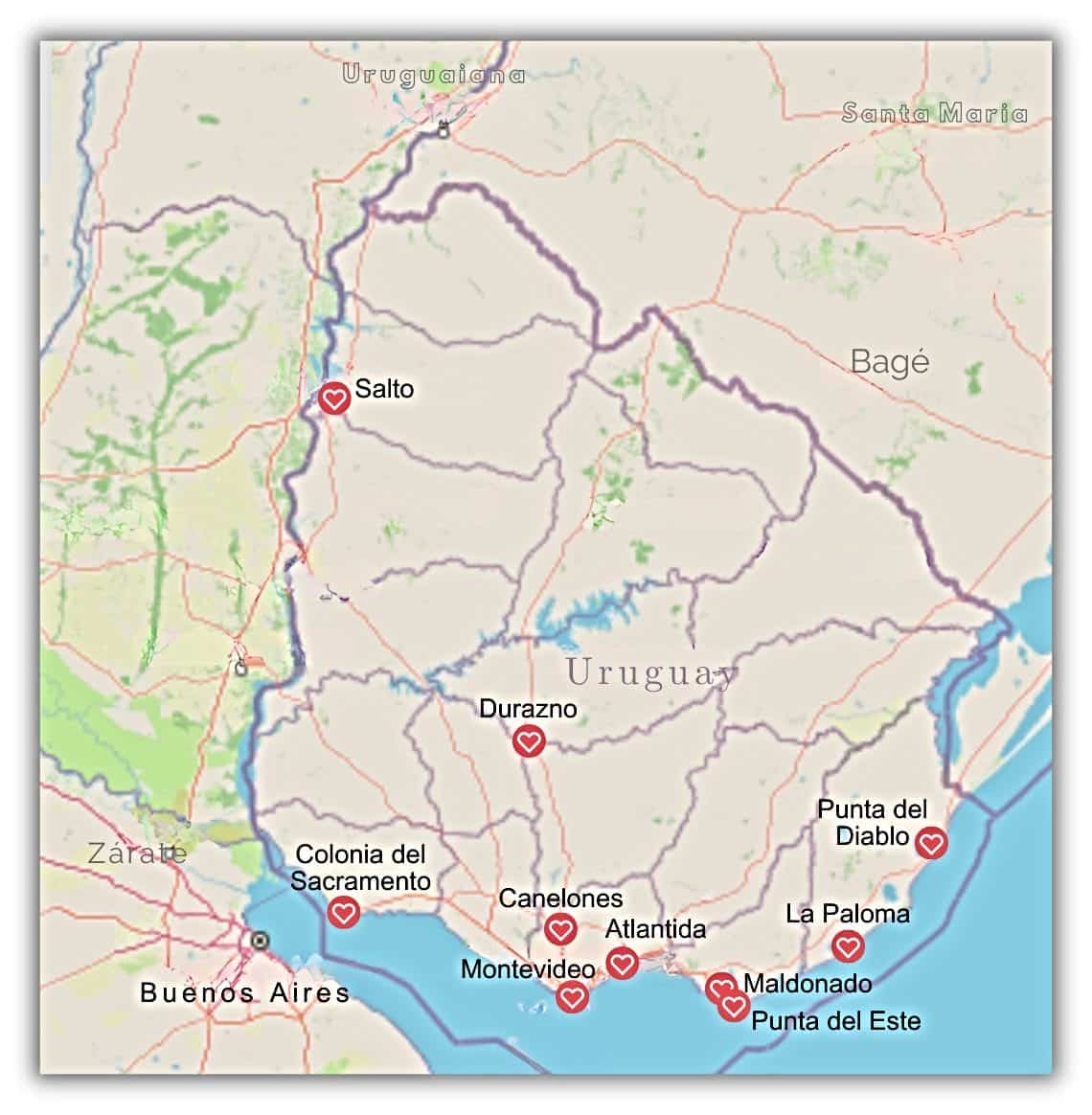
This is where you would find all your services for a convenient day-to-day life. This is especially true for popular tourist hotspots with good infrastructure and facilities, including schools, shops, private hospitals, and good travel links.
The country's south has a very pleasant climate; it is cooler, and the summer is especially mild on the coast east of Montevideo, like in Punta del Este.
The interior cities, in general, are cheaper but less entertaining, with not that much to do. Not many expats choose to live in the interior.
However, if you are looking for a nice piece of land surrounded by nature and solitude while still having neighbors not very far away and town conveniences within a comfortable drive, you must step away from the coast.
We will give you a few suggestions for both options.
1. Montevideo
Montevideo, the capital of Uruguay and its metropolitan area, is the most cosmopolitan place you can find in Uruguay.
It’s also the place that many newcomers to the country regard as a “safe choice” - there are other expats, all the services and facilities you need, it’s easier to meet English speakers, and you can enjoy a variety of attractions and activities.
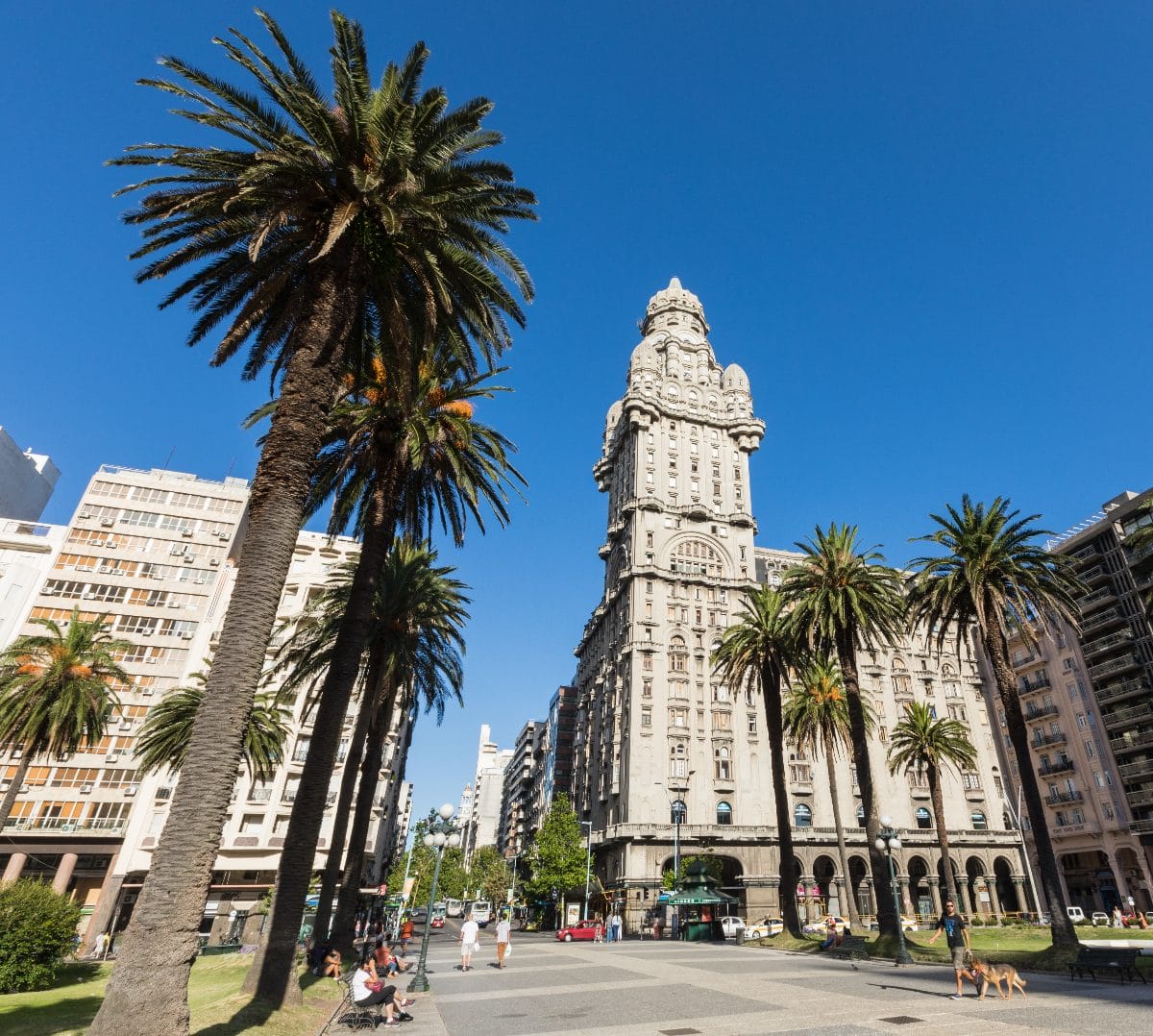
Choose a nice neighborhood such as Malvin, for example, and you will rarely need a car as everything you need is very close by, and the public transportation is great.
You have parks, museums, theaters, beaches, and a lovely promenade along the waterfront. Montevideo has everything you need for a comfortable and enjoyable life.
There’s an international airport that connects it with other major cities in South America and beyond.
The weather is generally pleasant and mild. January is the hottest month in Montevideo, with an average temperature of 24°C (74°F); although it doesn't look too high, it might feel quite hot due to the high humidity.
Uruguay's capital is good for expats who want to live in a modern and dynamic city with a lot of cultural and entertainment options. It is also a brilliant option if you work remotely or online, as the city has good internet service and coworking spaces.
Drawbacks: Montevideo is expensive compared to other places in Uruguay or South America. However, the biggest negative is how noisy and crowded the city is.
2. Punta del Este
Punta del Este is a popular coastal city about 130 kilometers east of Montevideo, with stunning beaches and lively nightlife.
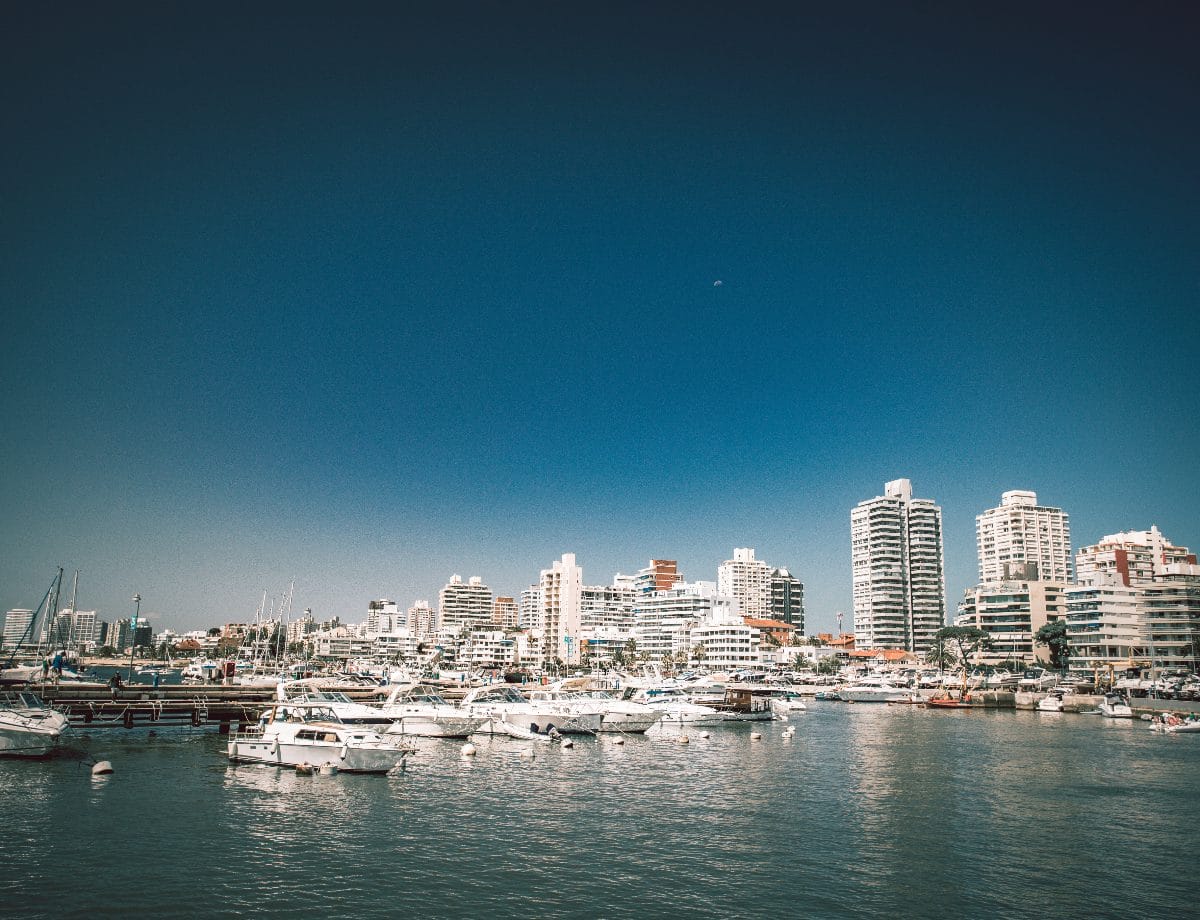
Some say it is the nicest and cleanest city in Latin America. Every year, it draws wealthy elites from Argentina, Brazil, and Paraguay, as well as thousands of ordinary, less salubrious tourists, especially during the summer (December to March).
This place is very multicultural, with Germans, Americans, French, Italians, and other nationalities all coexisting together in a friendly bubble.
The Punta del Este Peninsula divides the Atlantic Ocean and the Rio de la Plata. On the very tip is the renowned neighborhood with the same name, "Penisula."
The Peninsula remains the heart of Punta del Este; it's one of the most photographed attractions, hosting many restaurants, famous nightclubs, and a casino. Here, you'll discover Gorlero, the main street known as the "Fashion Road," along with the artisan's plaza, the lighthouse, and the marina.
A little beach on the eastern side of Punta del Este's peninsula, facing the Atlantic Ocean, is favored by surfers for its good waves.
There are some amazing sandy beaches nearby, like Chihuahua, Solanas, Manantiales, and José Ignacio.
José Ignacio is a jewel in itself. Once a humble fishing village, it has evolved into an upscale resort that outdoes Punta del Este. It attracts affluent visitors and celebrities to its stunning beaches, including the renowned Brava, a hotspot for surfing, and the serene Mansa.
Here, you can find yoga studios, chic cocktail bars, terraced grill restaurants, often affiliated with trendy hotels, and the most amazing panoramic views of the South Atlantic that you can enjoy from the top of the José Ignacio lighthouse.
Punta del Este is good for expats who love the beach lifestyle and want to enjoy the sun and sea all year round. It is also good for retirees who want to live in a safe and peaceful place with many amenities.
Both Punta del Este and Jose Ignacio are very popular tourist destinations, and the real estate here is very pricey.
Drawbacks: Punta del Este gets crowded and even more expensive during the peak season. It can also be quiet and boring during the off-season.
Outside Montevideo and Punte del Este, English is not spoken widely, so brush up on your Spanish - this will make your life much easier!
3. Maldonado
Maldonado, the capital of its namesake state, sits near Punta del Este and the city of San Carlos. Together, they form the country's second-largest and most populated urban area. So place yourself anywhere between those three, and you will always be within easy reach of all the urban comforts and offerings.
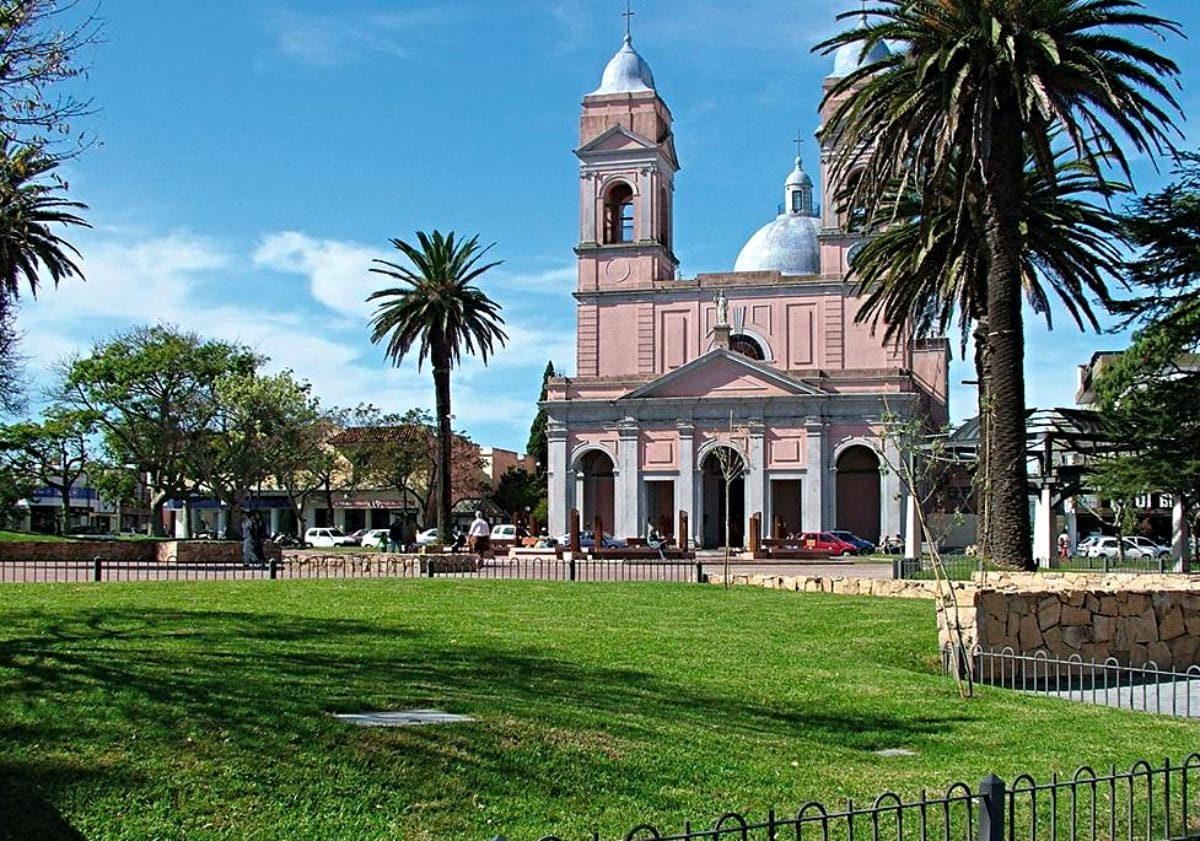
Maldonado is a more affordable and less glamorous Punta del Este. It is a nice place, quiet in winter and quite loud and lively in summer.
Many will tell you that the greater Maldonado area is probably the best place to live in Uruguay. Places like Piriapolis and Maldonado attract many temporary visitors and permanent residents.
Maldonado is very expat-friendly and has a big Argentinian expat community. In recent years, the area has been growing and developing, attracting new residents from within the country as well as from Canada and the United States.
Drawbacks: Crowds in summer are pretty maddening. However, if you venture further away from the tourist hotspots, you will be able to find crowd-free spots even in summer, such as Playa Mansa and Brava.
4. Colonia del Sacramento
Colonia del Sacramento is a charming colonial town located on the western coast of Uruguay, on the banks of the Rio de la Plata, opposite Buenos Aires. It has lovely colonial architecture and a relaxed vibe, making it a perfect place to enjoy life.
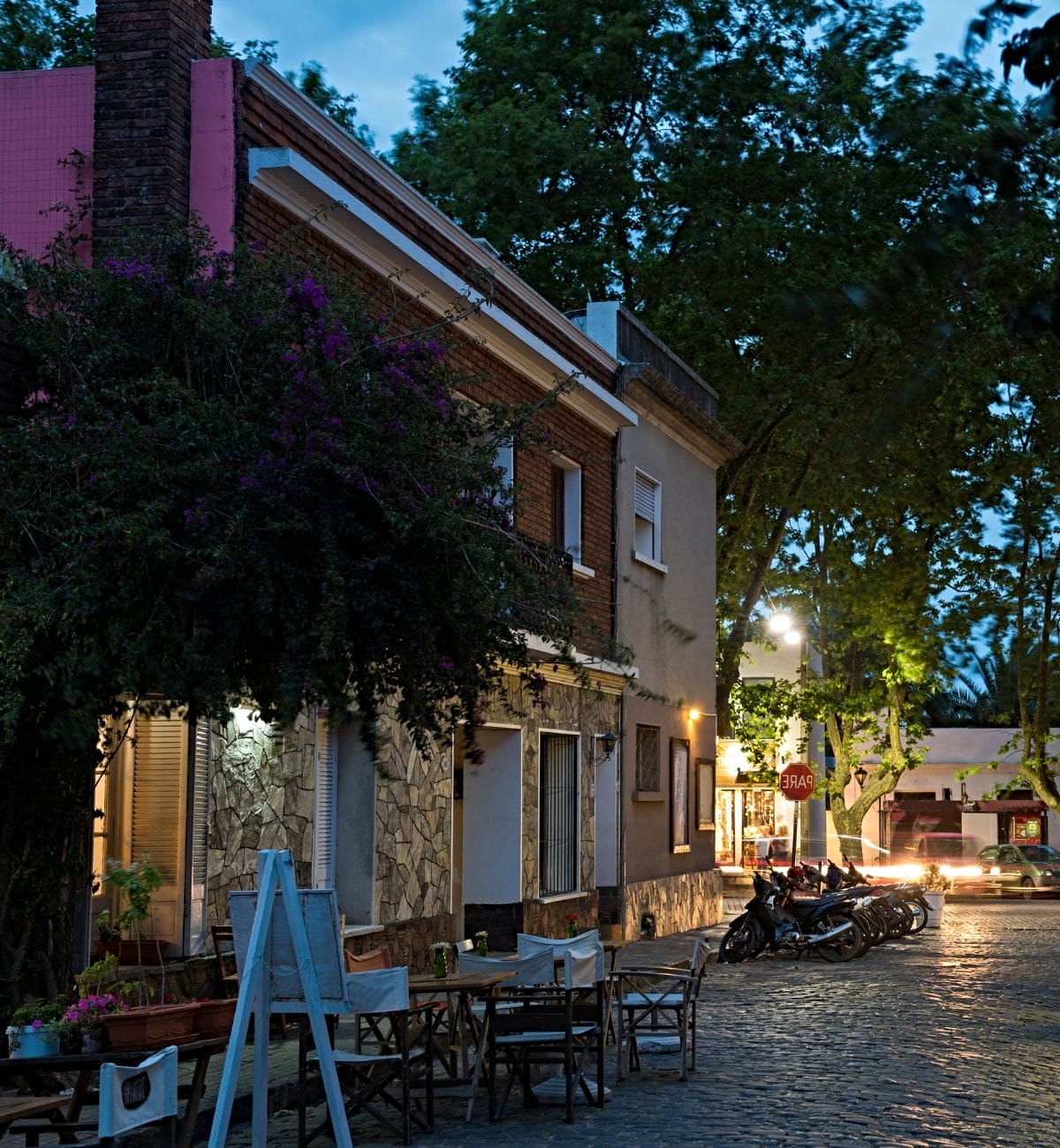
There are four very different yet temperate seasons. It never freezes or snows here. Summers are warm but not unbearably hot.
The town has beaches, casinos, horse races, and tourists from all over the world. It's a short ferry trip across the Rio de La Plata to vibrant Buenos Aires, where anything and everything is available. High-speed ferries make the crossing around eight times daily, taking about an hour.
The cost of living in Colonia de Sacramento is much lower than in other parts of Uruguay. The town is definitely more affordable than Argentina or Brazil. It is very safe, with low crime rates and friendly locals. You can walk or bike everywhere while enjoying the beautiful scenery.
The waterfront is especially lovely, with a promenade, a lighthouse, and a marina. You can also take a ferry to Buenos Aires for a day trip or a weekend getaway.
There are schools, hospitals, banks, and other services available. Overall, the town offers a high quality of life for a reasonable price.
Colonia de Sacramento is also good for families, retirees, and digital nomads, as the internet is quite good.
In fact, the town is trying to attract more remote workers with the development of +Colonia, a smart city planned as an innovation hub and a residential area.
Drawbacks: The town might feel small and isolated, and it can get boring after a while. There are not that many cultural or entertainment events happening here, and the nightlife is pretty quiet. The town also depends heavily on tourism, so it can get crowded and noisy during peak seasons. The climate can also be challenging for some people. It's very humid here, especially in summer, and it can get cold and windy in winter.
5. La Paloma
Rocha Department coastline is perfect if you love surfing, quieter life, and being close to nature. Rocha Department's standout feature is its stunning coastline and the coastal lagoon system with unique wildlife - a real treasure for nature lovers.
The two very popular places with expats are La Paloma and Punta del Diablo.
Both are small towns with a low population, which increases drastically when the tourists turn up in the summer months. The area is great for aquatic sports, cycling, horseback riding, and eco-tours.

La Paloma is a charming beach resort town and an excellent low-cost alternative to living in Punta del Este and other expensive cities. It is less than a 4-hour bus journey to Montevideo and a 1-hour drive to the border city of Chuy.
Its town center is on the Cape of Santa Maria, where restaurants, hotels, low-rise condos, markets, a casino, and various shops are located.
At the cape's end, there's a large bay, lighthouse, and commercial boat harbor. Residential areas flank each side of the cape. Just a little out of town, you will find private communities and small farms.
La Paloma is reasonably serviced with banks, shops, a couple of hospitals, and various restaurants and cafes.
Drawbacks: It does get overrun by tourists in summer, and the winters get a bit chilly.
6. Punta del Diablo
Punta del Diablo is an ideal place if all you want is nature, beaches, a beautiful Atlantic coast, and around five thousand locals sharing your love for the place.
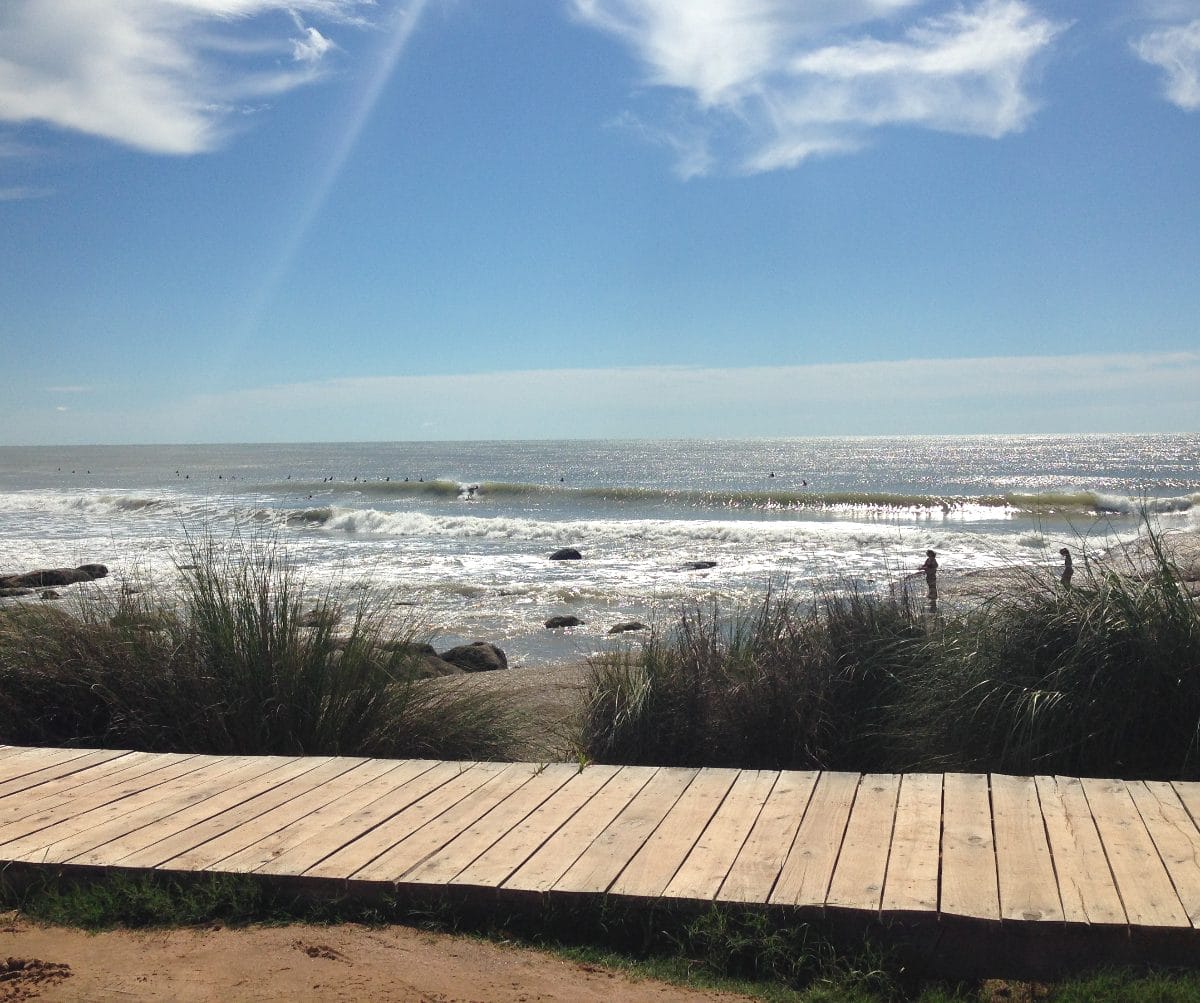
Punta del Diablo is a cozy fishing town and beach getaway on Uruguay's eastern coast. The main Pescadores Beach hosts fishing boats, while Rivero Beach is where you go surfing; the curving, sandy Grande Beach is your "lazy-day-on-a-beach" destination that runs alongside Santa Teresa National Park.
The town is small but quite multinational, and the locals are mostly friendly. You will meet expats from France, Germany, Russia, Spain, Argentina, Brazil, Venezuela, the United States, the UK, and other countries.
It's also a tourist destination that, in summer, attracts thousands of visitors. It's popular with surfers, hikers, beach fanatics, etc.
Punta del Diablo enjoys warm weather throughout the year, with temperatures usually hovering in the low to mid-70s (F).
Public transportation won't wow you, so having a bike or a car can be useful.
Healthcare options are also somewhat limited - there's a health clinic in town, but for more specialized medical services, you will need to go to Rocha town or, in some cases, to Montevideo.
There are a couple of supermercado (supermarkets) and a few small shops scattered around the town. You can also go shopping on the Brazilian side of the town of Chuy, which is a free zone. It's a bit of a drive, but it's worth it.
Drawbacks: limited infrastructure, fewer amenities, and services.
7. Canelones
Canelones, a city northeast of Montevideo and the capital of the Canelones department, is known among expats for its great gated communities.
The department is home to several towns and neighborhoods, which are a perfect place for families with children.
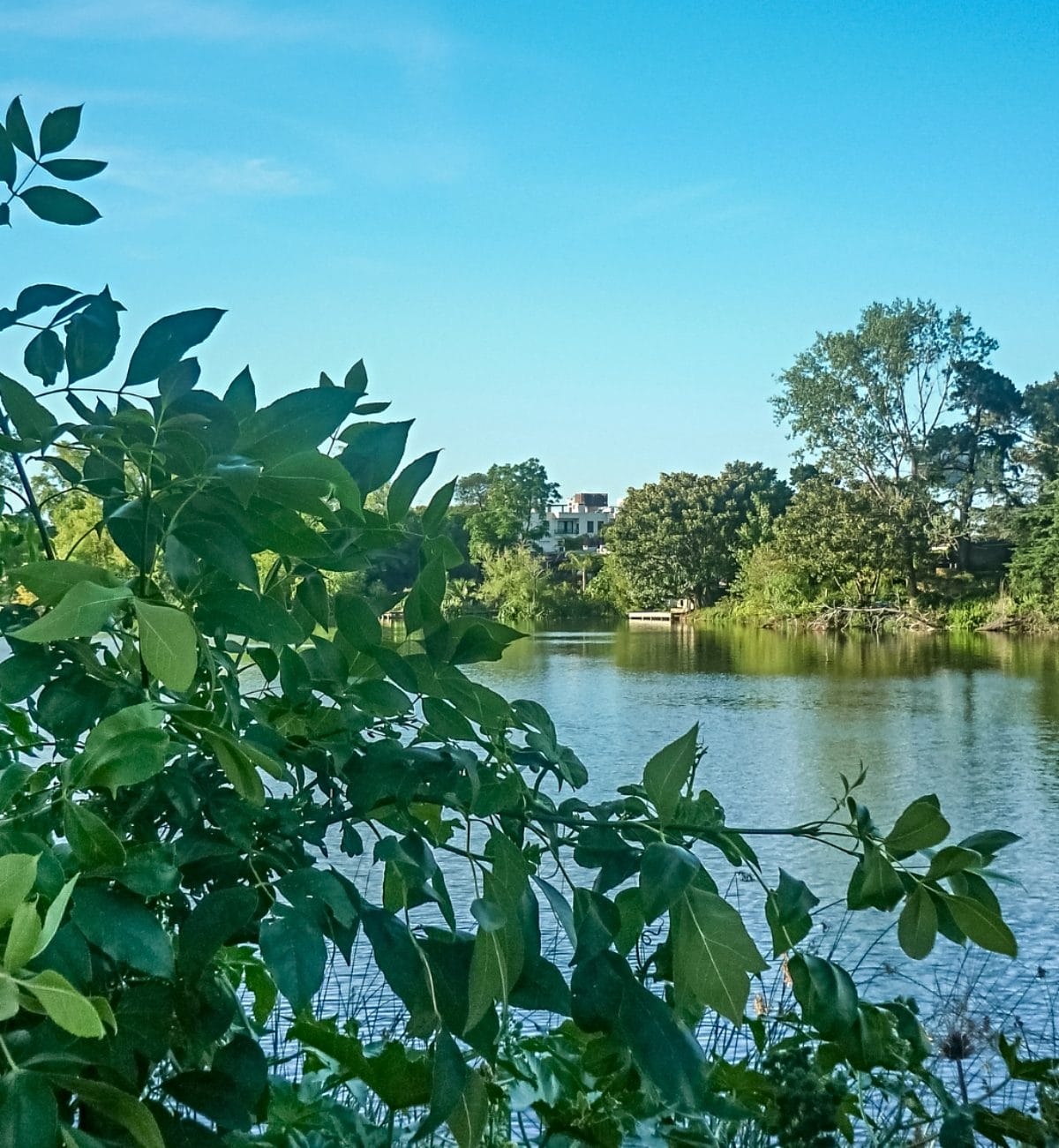
Gated communities are very popular with families with children. In these communities, it’s quite common to let children as young as 5 play outside on the streets without needing to worry about traffic. All neighbors know each other and look after the children and their well-being.
There are also bilingual schools in the department.
The internet is also good, so working from home is no problem.
Real estate prices here are a pleasant bonus. The budget that can only afford you an apartment in Montevideo can buy you a house with land here. This is why many wealthier Montevideans move to Canelones, as they can swap their city apartment for a spacious house and a garden.
When you leave Montevideo for Canelones, the first town is Parque Miramar. It's a great area with lakes and greenery that attracts young families. It's a convenient place to live - you have all the space and nature, but you can also reach Montevideo downtown and the airport quite quickly.
Drawbacks: if you need to commute, the roads get really busy at peak times. Plus, public transportation is not that brilliant, so you will need a car to travel around.
8. Atlantida
Atlantida, just a 40-minute drive from Montevideo, is quite an old-fashioned town. It’s cozy and quiet, with a weekly local market that draws everyone to its stalls full of fresh produce and other essentials.
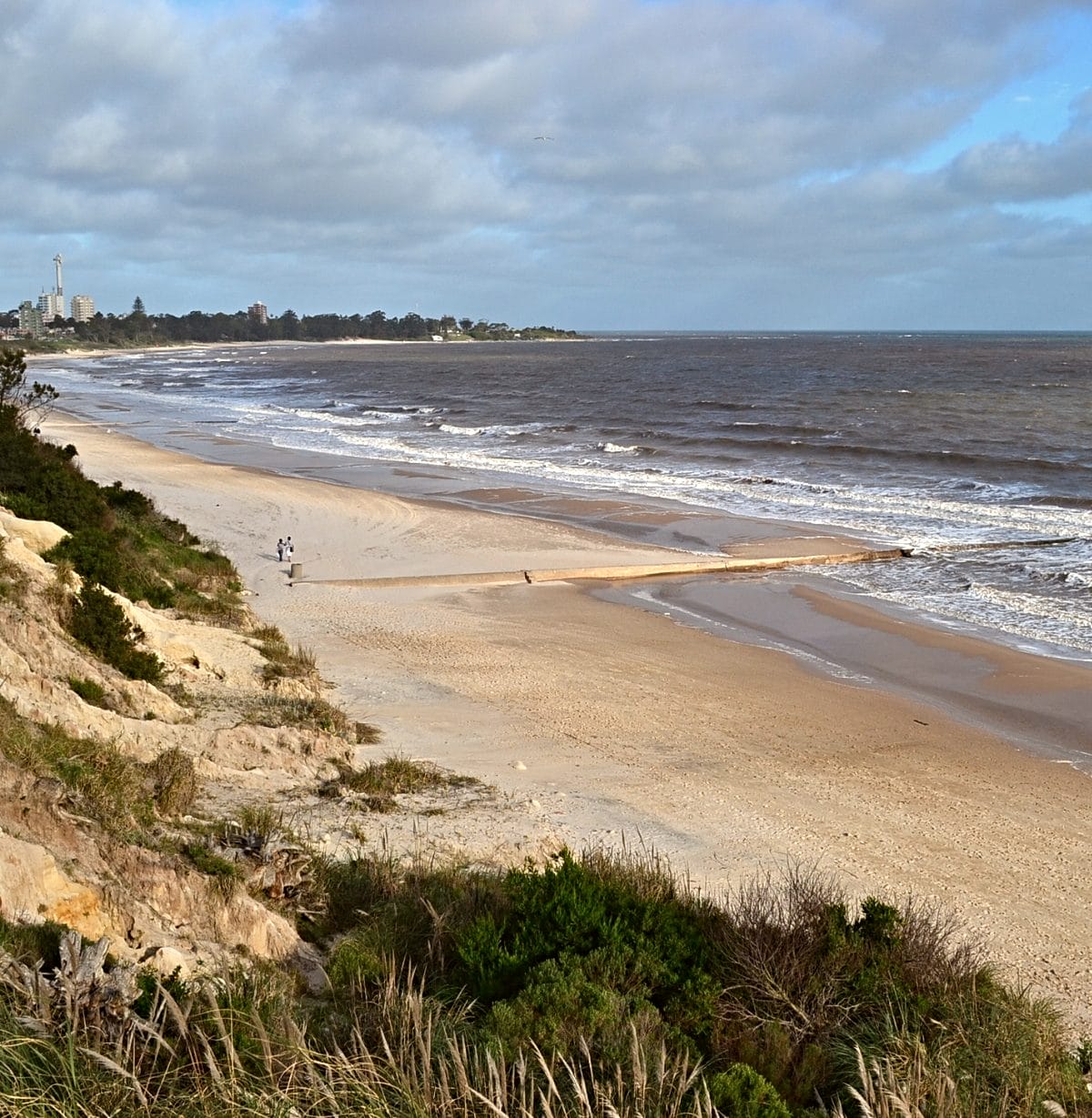
It has a variety of activities, grocery stores, restaurants, and healthcare services. Real estate in Atlantida is more budget-friendly compared to other coastal towns in Uruguay. If you want a small coastal city with all the basic services, Atlántida is what you need.
There’s not much going on here. You will find some local clubs, a cinema, and a small expat community. Living in Atlantida is all about beautiful beaches, a relaxed lifestyle, and a temperate climate with warm summers and mild winters.
Drawbacks: Basic services and a lack of public transportation.
9. Salto
Don't fancy coastal living? Head northwest towards the Brazilian border to the city of Salto.
Situated on the Uruguay-Brazil border, Salto is the second-largest city in the country. With over 200,000 residents, it’s a lively and well-serviced place featuring beautiful parks and nature reserves.
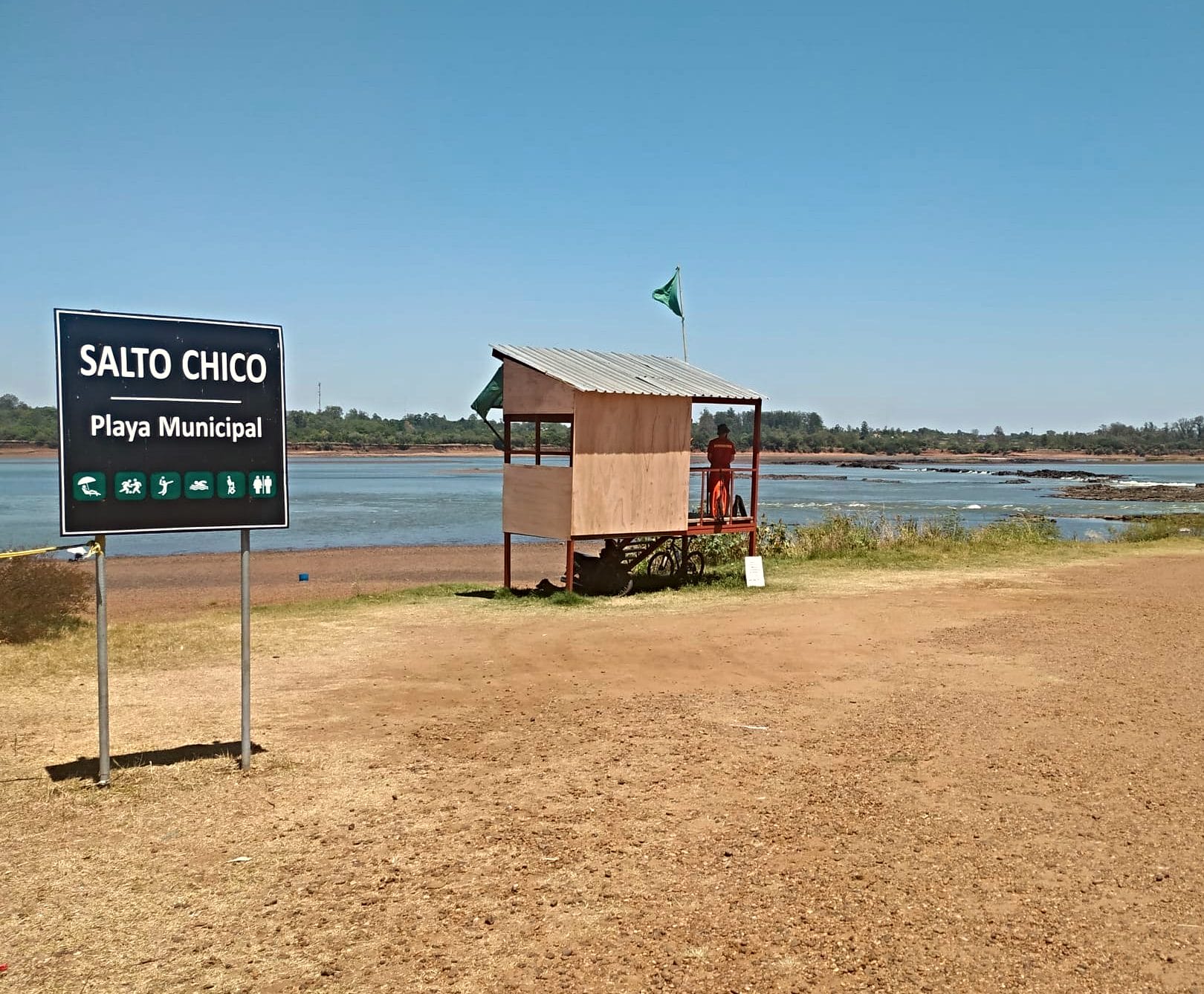
Salto is a good place for expats because of its pleasant climate, affordable cost of living, and the opportunity to experience the local culture.
The city has all the amenities you need, reasonably good infrastructure, and good connections to various parts of Uruguay.
The two most prominent highlights of the place are hot springs and wineries. You can spend a day in a hot springs park just 6 miles from the town or enjoy a wine-tasting session in one of the local vineyards.
A more adventurous option is to go for a day trip to Concordia, Argentina, by either driving along the Salto Grande Dam (or taking a bus) or opting for a small ferry across the Rio Uruguay.
Salto is a pretty chill city; there is no flashy lifestyle or super nightlife. It is perfect if you relish outdoor activities and want all important day-to-day amenities on your doorstep.
If you want something more rural and even quieter, look at some other towns on the Brazilian-Uruguayan border, such as Rivera, Tacuarembo, and Carmelo.
Drawbacks: It's a pretty laid-back place, and while for some, it might be a huge advantage, if you are looking for more action and excitement, this is not the right place.
10. Durazno
As the utmost of-path destination for expat living in Urguay, we offer to your attention Durazno, a small city (about 35,000 people) in the Central Interior region of the country. It is the capital of the fruit and wine-growing area of the same name.
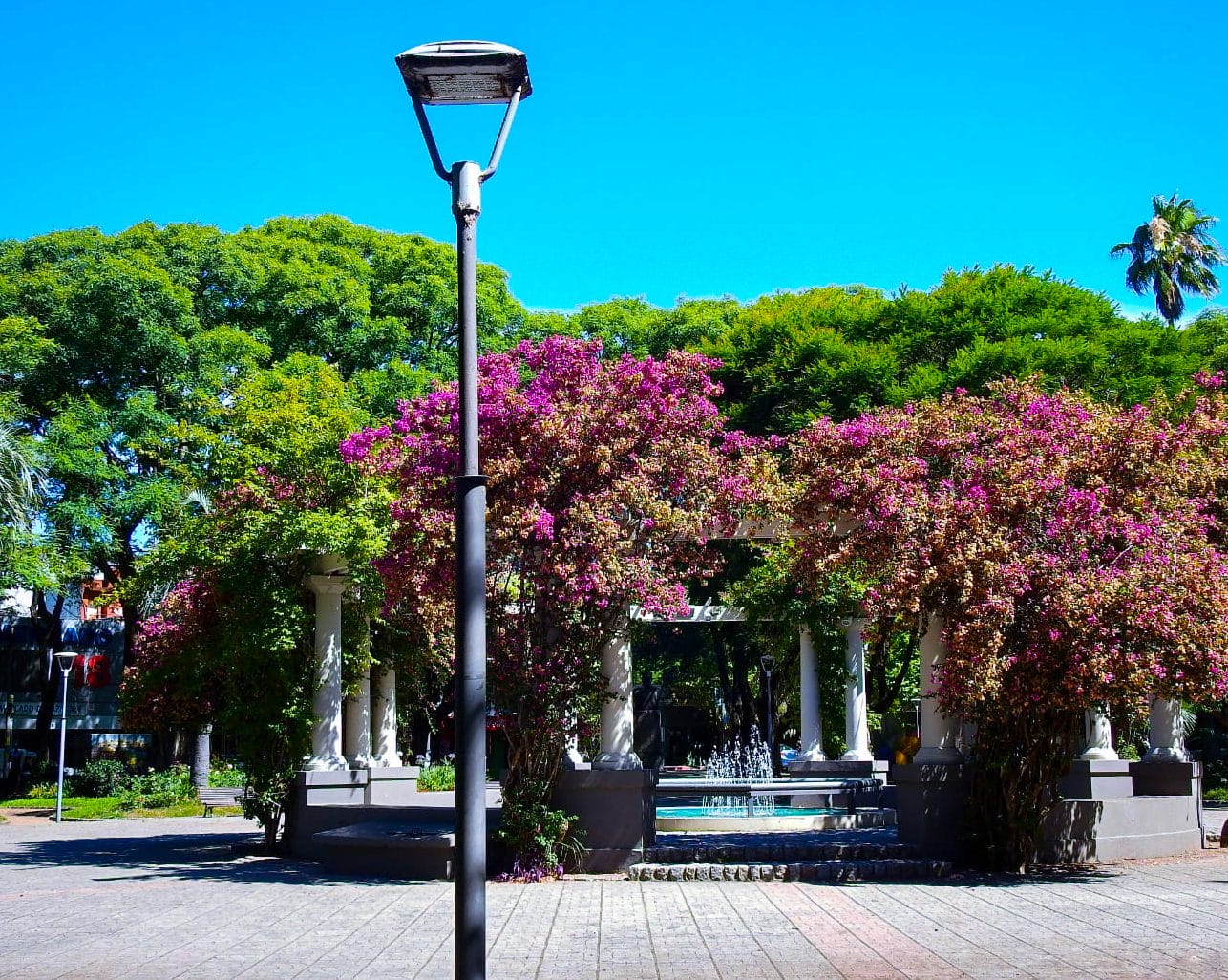
There is very little tourism here. The place has an incredibly laid-back feel to it; it is very leafy with lots of trees, well-kept, colorful buildings, and the most amazing Central Plaza. The abundance of trees is the reason the city is recognized as the greenest city in South America.
The Yí River passes through the city, providing it with a beautiful beach - the pride of the residents.
For three days in February, Durazno wakes up from its serene existence and greets the participants of the National Folklore Festival "All Uruguay sings in Durazno” who come from Latin America and the world.
It's a small town living at its best if you are ready to integrate, learn the language, and become one of the locals.
Everything in the area, including markets and services, is conveniently close to each other. The surrounding landscapes are incredible, and the weather is quite pleasant for most of the year. Winters can be a tad chilly, though.
House prices and general living costs are more than reasonable.
The town is reasonably well connected to the capital. Buses run regularly between Durazno and Montevideo throughout the day. The journey takes about two and a half hours in each direction. There are also buses connecting Durazno to other cities like Colonia and Rivera.
Drawbacks: It’s a small town living at its best and a total cultural immersion. But it’s not your traditional go-to expat destination, so make sure you are comfortable with it.
Final thoughts on the best places to live in Uruguay
The choice of locations in Uruguay is not that huge.
If you don't enjoy city life but want some expat community around, consider a coastal town, maybe somewhere in Maldonado, if you are after a less expensive life.
However, if you want to access a wider variety of services and goodies, you might want to be close to Montevideo. Or have a car to be able to do so. Of course, there's always a bus option, but to be honest, getting to Montevideo by bus can be a bit of a hassle. Also, there’s no Amazon!
If you are going to work from home, make sure there's internet available in your chosen destination. And yes, the most important thing is to learn some Spanish. If you can speak to the locals and love the quiet life, Uruguay is a good place, and you'll be happy.
You might find useful:
- Living In Uruguay As An Expat: the detailed guide to moving to Uruguay
- Best Places To Live In South America For Expats
Secure Peace of Mind with Best-Value International Health Coverage
International Citizens Insurance provide free, no-obligation quotes from the leading international health insurance providers with plans tailored to meet your needs. Trusted by thousands of expats worldwide.




